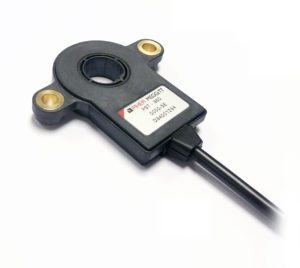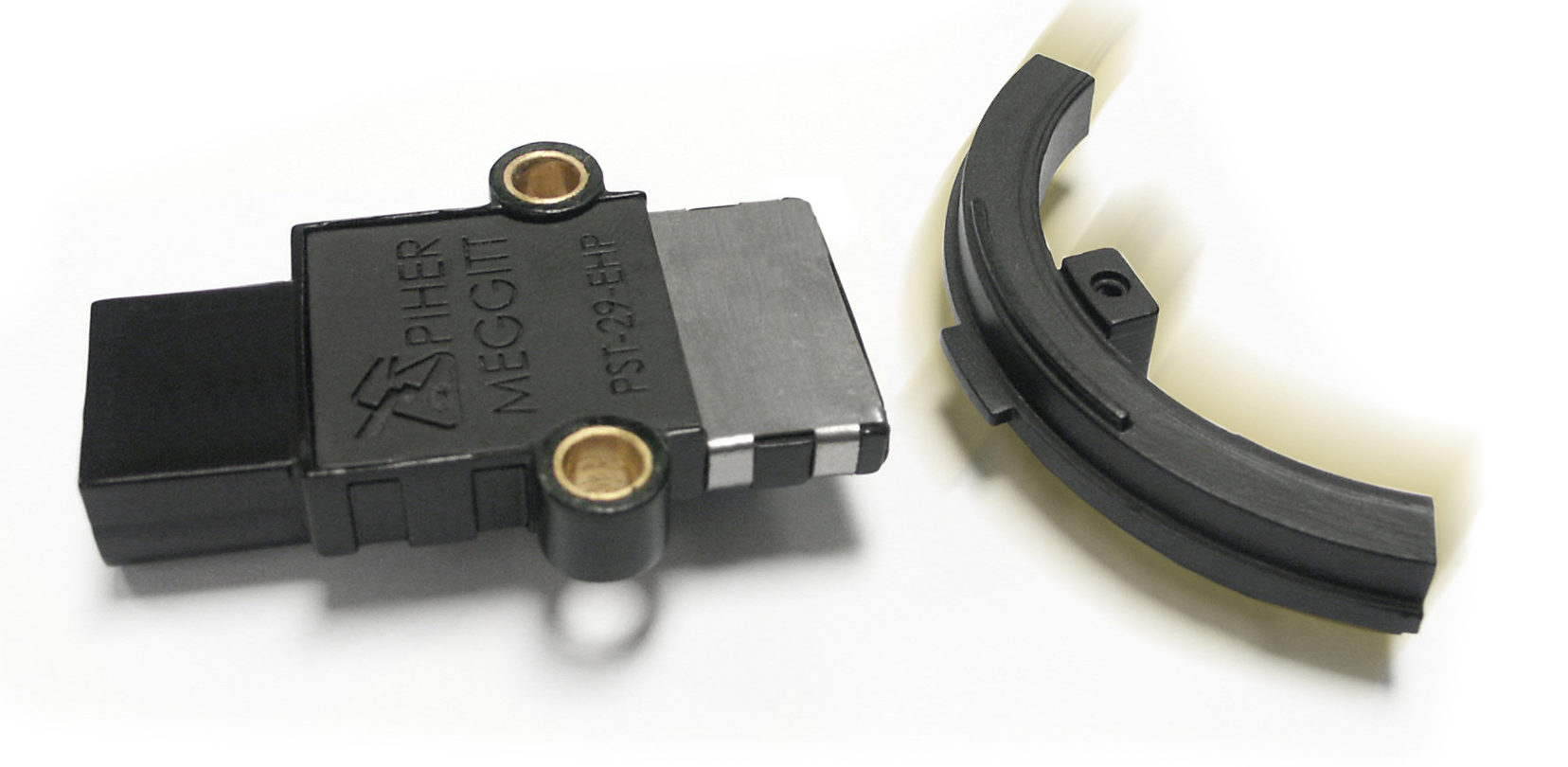Recently we asked Jose Luis Macia, program manager at Piher Sensors & Controls of Meggitt, about some trends in motion engineering design. Here’s what he had to say.
Eitel • Design World: What industries are spurring changes in today’s motion components?
Macia • Piher: We see increased demand for contactless Hall-effect rotary sensors in industries having environmental extremes — material handling, agriculture, construction and marine, for example.
Just consider one design: Design engineers in these industries building rugged vehicles now want contactless rotary sensing (because of its avoidance of wear and tear) without expensive over-engineered solutions to precision. They want enough accuracy plus stable performance over a long lifetime, despite environmental extremes.

Contactless Hall-effect feedback plays to this requirement. Some through-shaft sensors (having a full circle magnet and an electronics module) even wrap around shafts to directly track rotary motion. These fit anywhere on a shaft to give engineers design flexibility … plus they’re easy to assemble and reduce the bill of materials. That’s because contactless sensors don’t require any mechanical interface with the rotating shaft.
For operators, contactless sensors equate to maintenance-free feedback, even to 50 million rotational cycles of 360° precision and stability in some cases — even when subject to vibration, shock, temperature and contamination.
Eitel • Design World: What industries or applications are using more custom position sensors than in the past?
Macia • Piher: Lately we’ve sold more custom position sensors to material handling, agriculture, construction and marine industries. Applications are diverse, but they’re mainly those that never needed or included sensing in the past because traditional shaft-motion feedback introduced design limitations or reliability problems.

Eitel • Design World: Tell us about a challenge engineers solved with your sensors.
Macia • Piher: Air-gap issues are a challenge some newer sensors address. Traditional one-piece sensors can be problematic when the rotary shaft exhibits radial and axial play. In contrast, shaft sensors that separate the magnet from the electronics module avoid the problems caused by radial and axial play on mobile shafts.
Where an application only needs tracking along a portion of a 360° swing, we recommend sensors with arc-shaped magnets that attach to the rotating part — whether boom loader, skid-steer bucket or hitch arm. In these setups, the electronics module (tracking the angular position along the arc-shaped magnet) then attaches to the chassis. Some setups allow axial play of ±1 to ±1.5 mm or more. Even as recently as 10 years ago, such ruggedness in sensing was impossible because Hall-effect technology was sensitive to the airgap play variation between the magnet and electronics. Now firmware and fast processors corrects for those airgap variations.

Eitel • Design World: What kinds of industry moves are you seeing to miniaturization, system-on-chip (SoC) technologies, and customization?
Macia • Piher: Miniaturization is important in designs where space is the main constraint. Here, contactless feedback to survive environmental extremes also comes in miniature sensors. Here we have some offerings to give engineers the benefits of through shaft sensors at competitive cost.
For more information, email piher.sales@meggitt.com or visit www.piher.net/contactless.




Leave a Reply
You must be logged in to post a comment.